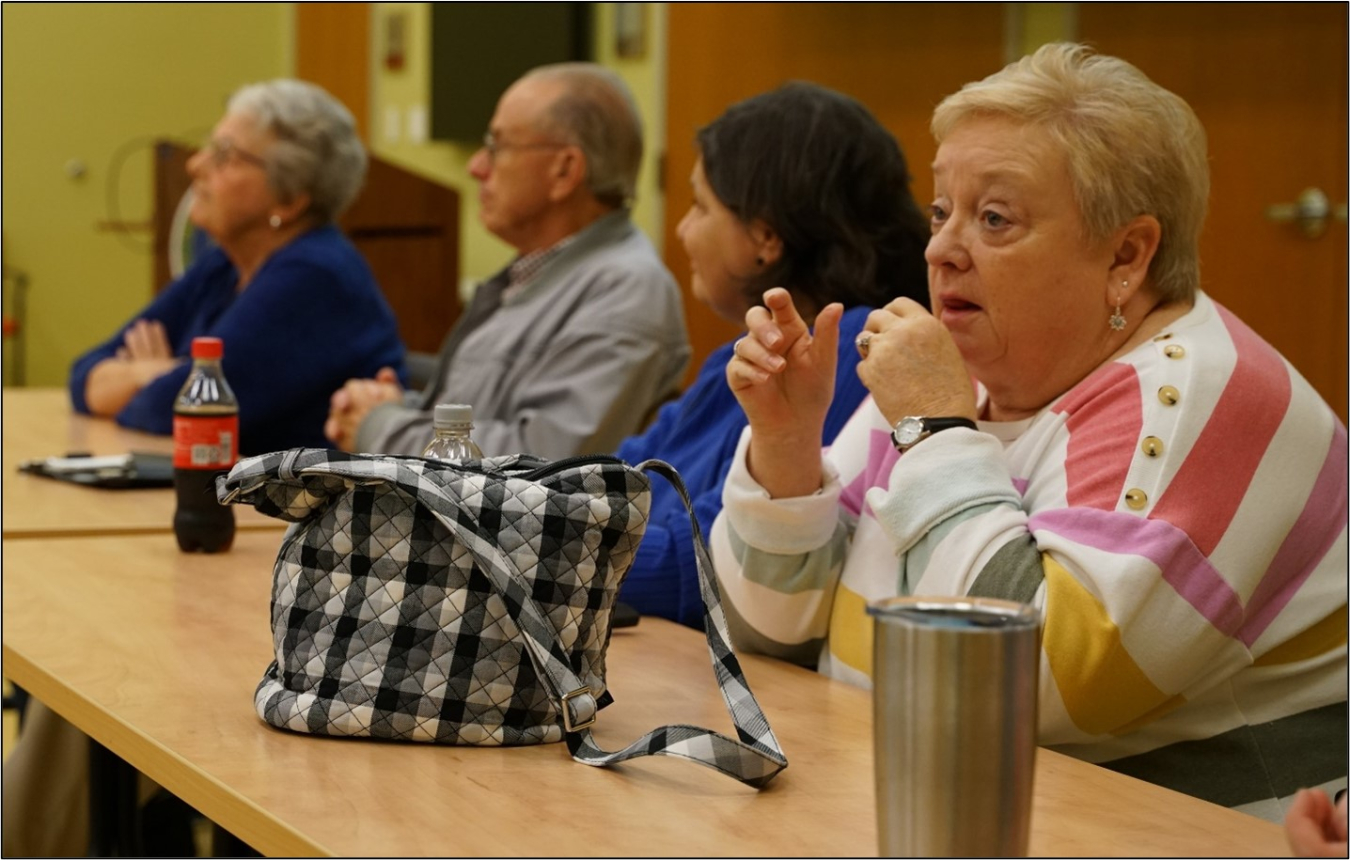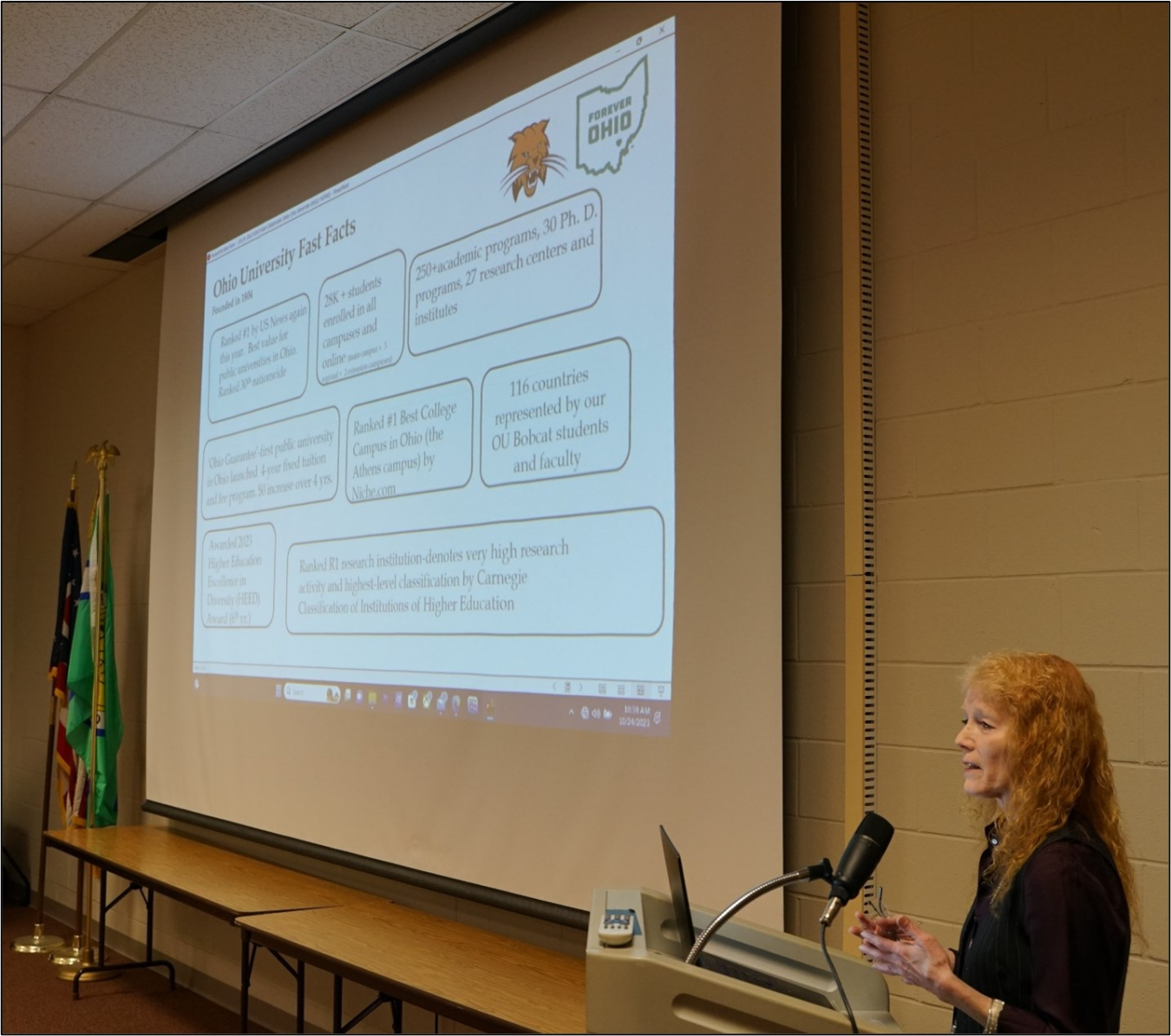Forum included tours to two DOE sites in Ohio
November 9, 2023
CINCINNATI – Representatives of the U.S. Department of Energy (DOE), Nuclear Energy Agency, U.S. Nuclear Regulatory Commission, U.S. Environmental Protection Agency (EPA), Ohio EPA, and technical and communications professionals from around the world recently converged here for the Forum on Stakeholder Confidence Workshop.
The workshop explored lessons learned and best practices focused on the forum members’ relationships with communities that host nuclear facilities or sites where such facilities have been remediated. They also heard from stakeholders who have experienced the highs and lows of interactions involving complex environmental issues.
DOE’s Environmental Management (EM) and Legacy Management (LM) offices prepared for the international visitors and welcomed the group to the EM Consolidated Business Center. There, they discussed waste management, reviewed specific case studies, and explored communications challenges and successes.
“The communications work that is performed on these matters is hard work, and it’s hard work no matter where it is happening in the world,” said Tania Smith Taylor, LM technical director for long-term stewardship. “It’s important to hear from stakeholders themselves and learn from each other so our engagement with communities in the future is productive and mutually beneficial.”
Representatives from Belgium, Canada, Czech Republic, Finland, France, Germany, Italy, Japan, Sweden, Switzerland and Norway took part in the workshop.
Participants toured the Portsmouth Gaseous Diffusion Plant in Piketon, Ohio. The plant includes a former uranium enrichment facility undergoing decontamination and decommissioning. The visitors also saw the depleted uranium hexafluoride (DUF6) conversion facility and a facility in the early stages of centrifuge enrichment. EM DUF6 Program Manager Zak Lafontaine and Fluor-BWXT Portsmouth (FBP) President and CEO Greg Wilkett provided updates on the various site projects. FBP is EM's decontamination and decommissioning contractor for the Portsmouth Site.
Ohio University plays a key role at the Portsmouth Site. Stephanie Howe, the university’s associate director of human capital and operations, explained how DOE’s grant with the university provides an engagement pathway for the public to help determine the site’s end state for beneficial reuse.
“The Portsmouth Site showed how academia can play a key role in helping us to communicate and engage with communities,” EM Intergovernmental and Stakeholder Programs Director Joceline Nahigian said. “Having a process to determine an agreed-upon end state is critical and that work is still having an impact today.”

Members of the forum also toured the Fernald Preserve Site located just outside of Cincinnati. Fernald was a former uranium processing facility that produced high-purity uranium metal products as the first step in the weapons production cycle. Cleanup there was completed in 2006, and the site is now home to a nature preserve with a new state-of-the-art interpretive center. It’s a regional destination for birdwatching.
LM Site Manager Brian Zimmerman provided an overview of Fernald and led the site tour. A panel discussion also featured stakeholders from Fernald community groups, including Fernald Residents for Environmental Safety and Health (FRESH) and the Fernald Community Alliance, along with Ohio EPA Federal Facilities Program Administrator Tom Schneider.
Stakeholders explained how DOE’s relationship with the community improved over time. Zimmerman said the relationship with the community is critical, even 17 years after cleanup concluded.
“We still have active remedies in place and the on-site disposal facility will be here in perpetuity, so communication with the community is still vital,” Zimmerman said. “We see our community members as partners who not only have a seat at the table, but definitely have a speaking role.”
FRESH member Lisa Crawford concurred.
“Thirty-nine years later, we’re still here. This is still ongoing,” Crawford said. “(The dialogue) is not done here and there is still more to do.”
The forum was established in 2000 by the Nuclear Energy Agency’s Radioactive Waste Management Committee as a platform for understanding stakeholder dialogue and discussing methods to develop shared confidence and informed consent and get approval of radioactive waste management solutions.
“This was quite an impressive group of people who have a shared interest to have positive community relations with members of their respective communities,” Nahigian said. “It doesn’t happen easily. It takes a lot of hard work and the work that was performed in Cincinnati will have impacts in the United States and beyond.”

